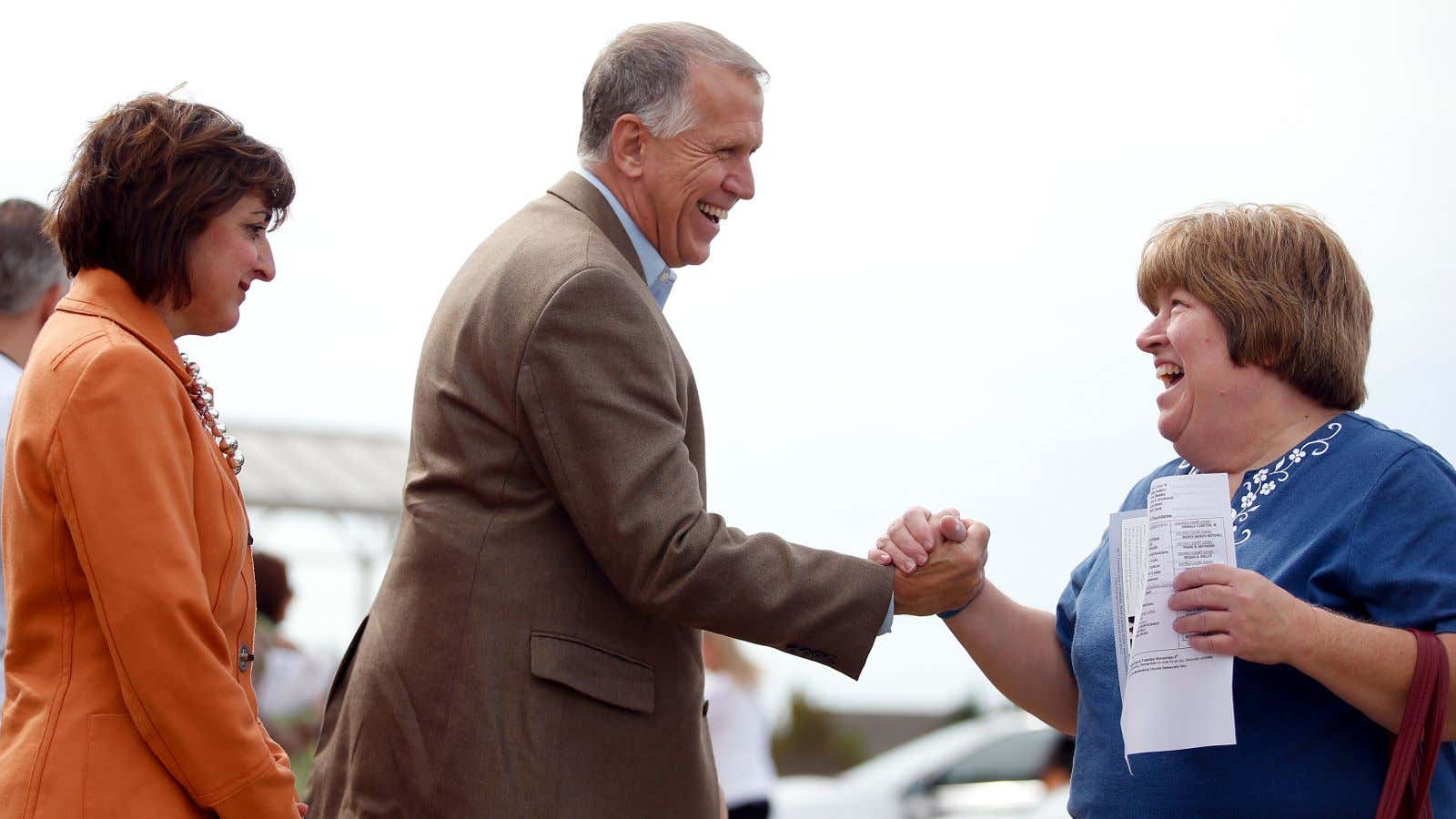It’s been a big year for direct outreach to US voters by political campaigns, but in the 10 toss-up states where control of the US legislature will be decided in today’s elections, no demographic has captured the attention of candidate representatives the way white women have.
Some 81% of white women voters have been contacted by political campaigns in these swing states. According to Micah Roberts, a Republican pollster who runs the venerable NBC/Wall Street Journal political poll, this election has seen very high rates of voter contact—57% of registered voters nationwide, and 74% of likely voters in the swing states—much greater than in 2006, a similar election cycle, when just 47% of registered voters were contacted. But the level of interest in the white-and-female demographic has been “stunning,” he blogged today on the website of his market research firm, Public Opinion Strategies.
The growing rates of voter outreach are likely connected to the increased use of digital tools and databases that have improved voter targeting for both parties; the growth in campaign spending is also at play. But why white women? In the 2012 presidential election, a major gender gap helped drive President Obama’s reelection, with women preferring him by 11 percentage points. But white women remained a strong point for Republican politicians: They went for Mitt Romney, the Republican nominee, 56-42.
That makes white women something of an important swing demographic. White people tend to vote Republican in recent elections, as they tend to be older, richer, and more conservative, while Democrats have found an advantage among female voters overall with their stance on government, as well as issues like equal pay for women, family leave policies, contraception and abortion.
Republicans have been trying to activate and excite as many white voters, and particularly men, as possible in recent elections. This is reflected in the NBC/Wall Street Journal poll findings that Republicans tended to contact more voters who intended to vote Republican. The Democrats, meanwhile, must make up the difference with support from their broader coalition of liberals, minorities, and women generally. That puts white women squarely in the middle of a political tug of war, at a time when the politics of gender are surfacing everywhere, from the internet flame-wars of #GamerGate to lawsuits challenging government subsidies for contraceptives.
For an example, look to the Rocky Mountains and the tight Colorado Senate campaign, where Democratic incumbent Mark Udall has been campaigning heavily on women’s issues and particularly abortion—a move that has attracted criticism for its one-dimensionality, but has given him a five-point lead within the demographic, according to one recent poll. In a tight race like his, that may be the difference between victory and defeat.
